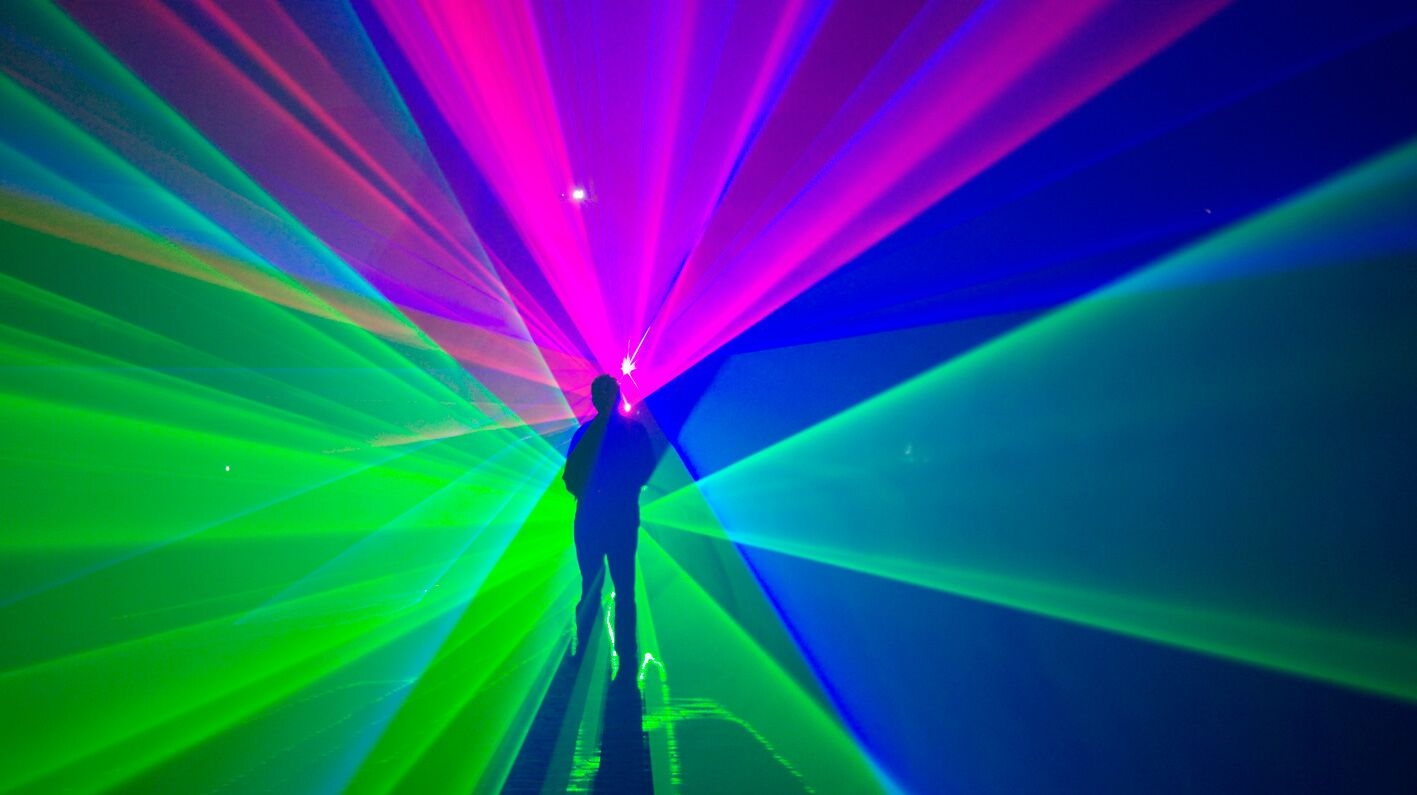Remotely piloted aircrafts (commonly referred to as drones) serve multiple uses, such as flying cameras, which are readily available for consumers to purchase and are employed by businesses to collect information. However, drones are most commonly associated with their role in military activities – specifically, the drone strikes in Pakistan administered by the US government, which has given them a nasty connotation. Despite this common connection, Sleeth was initially interested in drones from a creative and visual point of view.
“The way I think about drone is just the way I think about a moving camera platform,” he says. “In terms of the politics of it, [A Drone Opera] is very much referencing the drone assassinations, but it’s not explicit. What I wanted to do was more bring out the emotional and phenomenological aspect of that – I wanted to make sure people felt the wind of the rotors and people heard the noise and people just felt the violence they were capable of.
“It’s the idea of moving them from a political abstraction. You hear about them as an abstract concept and think about them as something that happens somewhere else. So when your body feels it, it tells you something very different to what you can make of a political abstraction.”
In order to emphasise the emotional and phenomenological aspects, Sleeth took it upon himself to design and construct all of the drones that appear in the work. These aren’t basic gadgets, so the technical hurdles have been manifold.
“It’s been a long process,” Sleeth says. “We actually did development at the [Arts House] Meat Market in April and basically learnt what was working and what wasn’t, and the period between now and April, we’ve custom built the drones for each scene. I think all artists in some way have a ‘whatever it takes’ approach to things. And what it took in this case was an enormous amount of time and technical stuff to get to the point where the art in that and the language became apparent.”
The design and construction of remote controlled vehicles isn’t something Sleeth’s done before, but it wasn’t exactly a leap into the unknown. “I’ve always been interested in where the art is in technology,” he says. “So photography or video or 3D printing or digitally fabricated sculpture is really all the same process for me, and drones is just another language, in a sense. I’m interested in where’s the art in that and where’s the language and grammar possibilities that technology allows that the others don’t.”
Having ascertained drones’ artistic possibilities, Sleeth developed unique drones for each individual scene. Along the way, it became apparent the narrative of A Drone Opera resembled a historically familiar tale. “There’s loosely the structure of the Icarus myth to this work. We didn’t actually take Icarus and lay it over the work, we actually recognised it already in the work. The idea of a magical technology, but then its promise is destroyed by hubris and arrogance is really the story of drones.
“Each drone has a movement language and a lighting design that would be the appropriate characterisation for that scene. So they sound different and they’re different sizes, they’re different technologies, they’re different aesthetics, they’re different physical presences. Some are very, very playful, some are very, very scary.”
Meanwhile, as the title indicates, the drones are supported on stage by elements of traditional opera. Throughout the performance, three live opera singers intertwine with the mechanical noise of the drones. “It’s kind of a deconstructed contemporary opera, so there’s a couple of moments of classical, virtuosic singing and then there’s quite a lot of abstracted sound-making. Sometimes the singers are almost droning and come in and out of the same tuning as the drones or in sympathy or as a call and response rhythm with the drones.”
Given the narrative centrality of remote controlled vehicles, A Drone Opera hints at a possible future of machine-led theatre productions. But Sleeth’s intention wasn’t to make such dystopic predictions. “It’s trying to talk about drones as a way to think about all technology. Basically it’s the idea that all technology is agnostic and that we decide whether it’s used for good or bad. Drones are a really good way to think about how much bad it’s done and how much potential good can be done. The other message I hope comes out really strongly is we’re always worried about the wrong thing.”
Indeed, people are constantly making moral judgements about technology – decrying Facebook’s impact on today’s youth or the way digital cameras prevent us from living in the moment. But it’s never the technology itself at fault. “Making moral judgements about technology isn’t judging the technology, it’s judging the people who will benefit and the power relationships behind that technology. I hope those are the idea people come away with, but they won’t be banged over the head. It’ll be a visceral/physical response that will hopefully leave you wondering about those questions.”
BY AUGUSTUS WELBY

